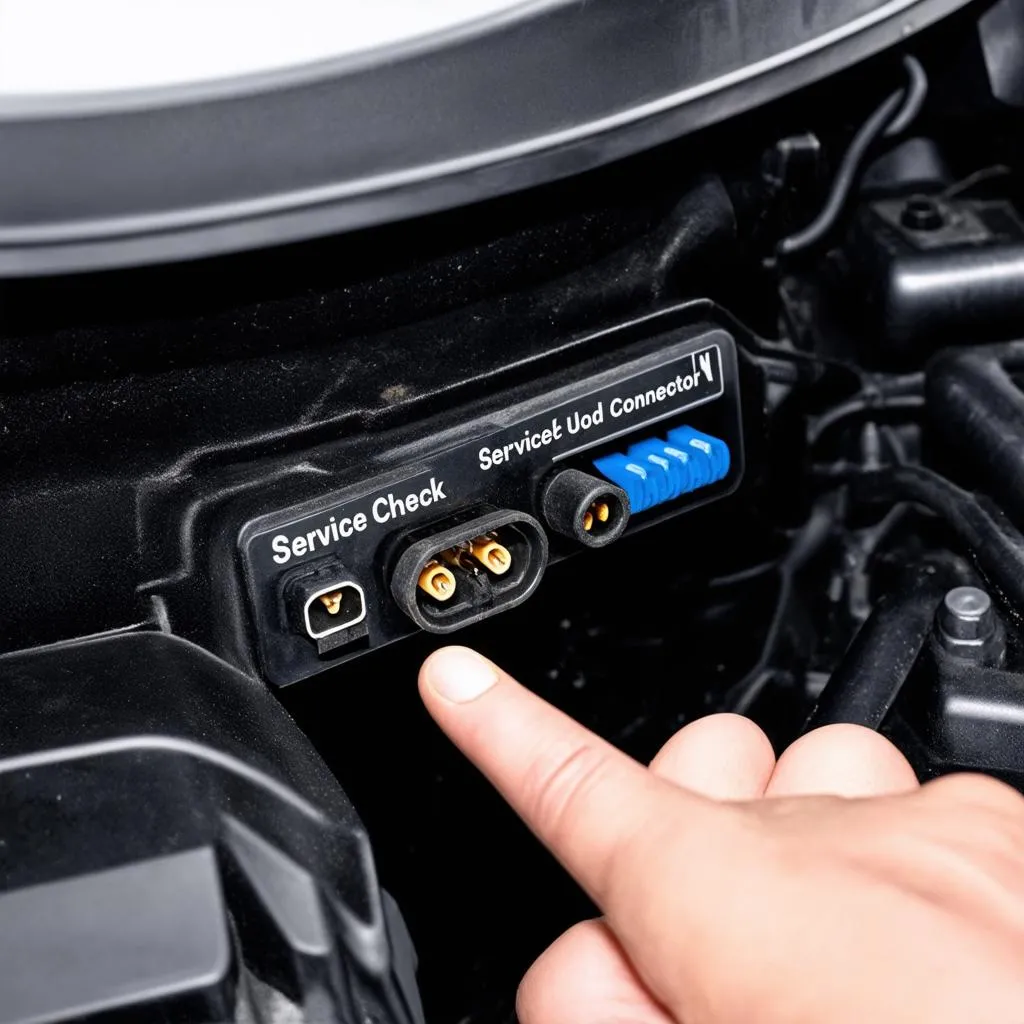“My 1995 Honda Civic is acting up again,” your buddy sighs, throwing his hands up in exasperation. “Check engine light’s on, of course. Something about an OBD1 code?” Sound familiar? We’ve all been there. Before you surrender to the mercy of a mechanic, let’s demystify these cryptic codes and empower you to understand your Honda better.
Understanding the Language of Your Honda
Just like your furry friend uses barks and meows to communicate, your Honda uses OBD1 codes to signal that something’s amiss. OBD1, short for On-Board Diagnostics generation 1, was the standard diagnostic system for Hondas (and other vehicles) manufactured before 1996. Think of it as your car’s early warning system.
What are Honda OBD1 Codes?
These codes are essentially a standardized set of numbers and letters representing specific issues within your vehicle’s engine and emission control systems. Imagine them as your car whispering, “Hey, my oxygen sensor needs attention!” or “That knocking sound? Might want to check my distributor.”
Why Should I Care About OBD1 Codes?
Ignoring these codes is like hitting the snooze button on your car’s cry for help. Early detection through OBD1 codes can save you from costly repairs and headaches down the road.
Cracking the Code: How to Read Honda OBD1 Codes
Unlike the more modern OBD2 systems with standardized code readers, retrieving Honda OBD1 codes requires a slightly more hands-on approach. Don’t worry; it’s easier than you think!
For most Honda models, you’ll find a two-pin diagnostic connector under the hood, often labeled “Service Check Connector.” You’ll need a simple jumper wire or paperclip to connect these two pins. Once connected, turn your ignition to the “ON” position (don’t start the engine). Observe your check engine light – it will flash a series of long and short blinks, much like Morse code. Each sequence corresponds to a specific OBD1 code.
 Honda OBD1 Service Connector Under the Hood
Honda OBD1 Service Connector Under the Hood
Where Can I Find What the Codes Mean?
Hold on to your jumper cables! You won’t need to memorize these blinking patterns like a secret code. Plenty of online resources and forums dedicated to Honda OBD1 codes offer comprehensive lists and explanations. A quick search for “Honda OBD1 code list” will lead you to the answers you seek.
Common Honda OBD1 Codes and What They Mean
While the specific codes vary depending on your Honda model and year, here are a few common culprits and their potential implications:
- Code 1: Oxygen Sensor: This sensor monitors your engine’s air-fuel mixture. A faulty sensor can decrease fuel efficiency and increase emissions.
- Code 7: MAP Sensor: The Manifold Absolute Pressure sensor measures air pressure in the intake manifold, crucial for optimal engine performance.
- Code 9: Crank Angle Sensor: This sensor tells your engine’s computer the position of the crankshaft, essential for timing and ignition.
Remember, these are just a few examples. Always consult a reliable Honda OBD1 code list or a trusted mechanic for accurate diagnosis and repair.
 Honda OBD1 Code List on a Laptop Screen
Honda OBD1 Code List on a Laptop Screen
Beyond the Codes: Feng Shui and Your Honda
While we’ve tackled the technical side, some believe that maintaining a harmonious balance within your car, much like the principles of Feng Shui, can promote smoother journeys and prevent breakdowns. Consider adding a small air-purifying plant or a lucky charm to invite positive energy and safe travels.
Need More Help? We’re Just a Message Away!
Decoding Honda OBD1 codes can be daunting, but remember, you don’t have to be a mechanic to understand your car’s language. Armed with the right information and a little patience, you can tackle those blinking lights and keep your Honda humming happily.
Still feeling lost? Don’t hesitate to reach out to our team of automotive experts on Whatsapp at +84767531508. We’re here to help you navigate the world of Honda diagnostics and ensure your beloved car stays in tip-top shape.
Happy driving!